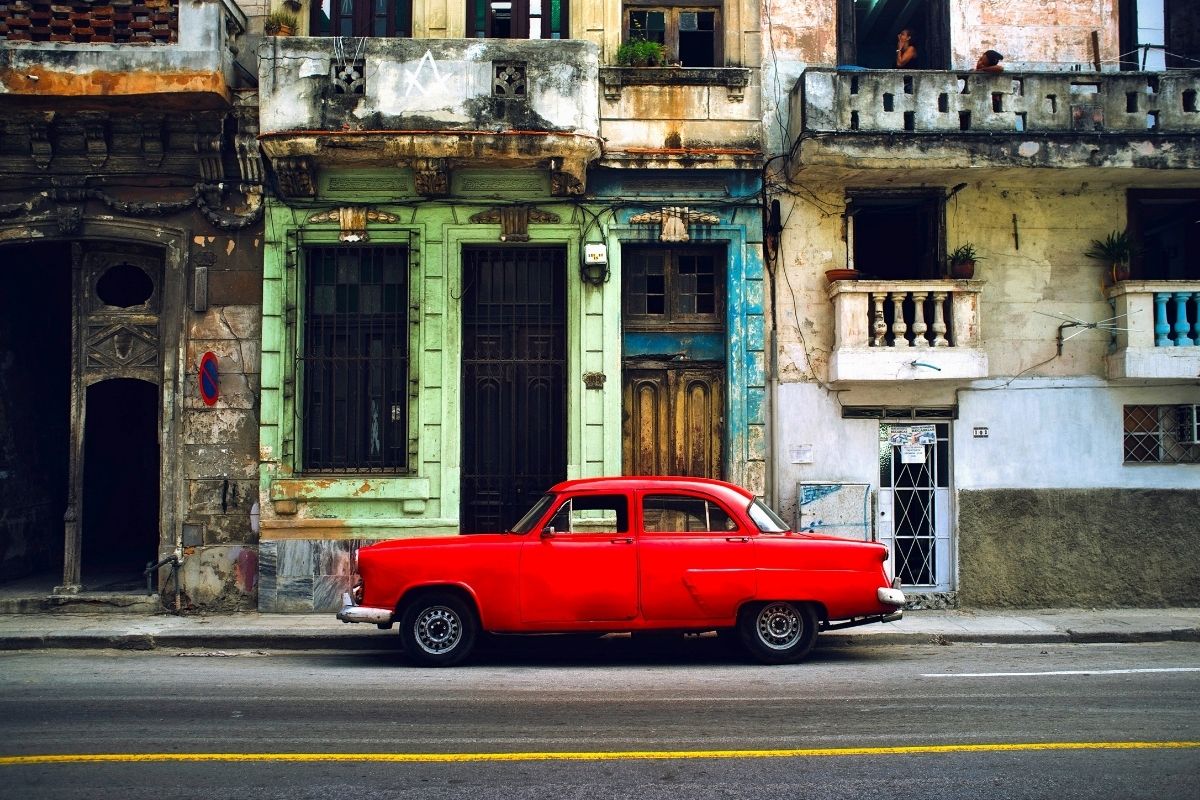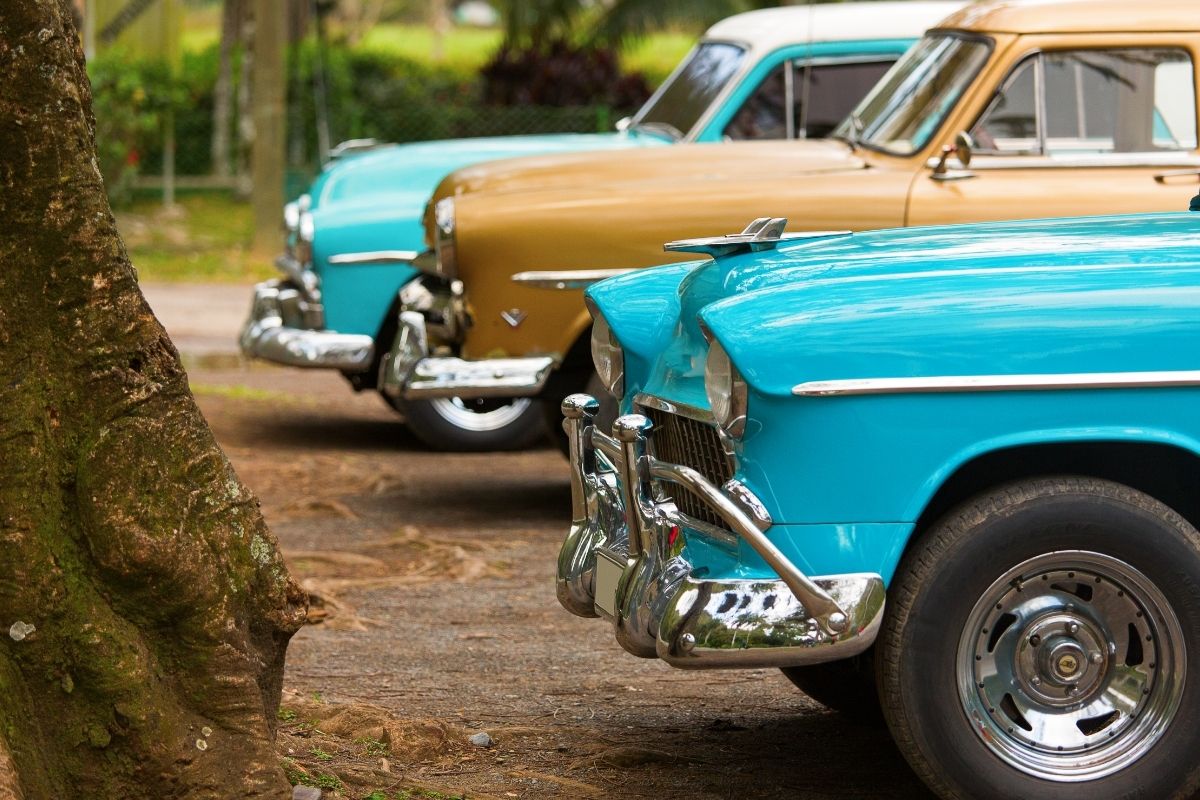When we picture the streets of Cuba, there’s something that seems to set them apart in a different time period, certainly from the United States, but to an extent, the majority of the world.
But why is this?

Sure, the architecture is quite classical, but not so far removed from what we see in some European nations, nations that don’t share the same time machine aesthetic as Cuba.
What leads us to view Cuba through something of an antiquated lens is the prominence of countless classic cars.
But why are these beautiful relics so ubiquitous in Cuba, while in the States, seeing just one of these lovely machines in any year would be a novel event?
Let’s discuss the matter in more detail.
The Classic Cars Of Cuba: Where Did They Come From?
It doesn’t matter what classic cars butter your biscuit, you’ll no doubt find a wealth of them driving the streets of Cuba.
From Chevrolets to Buics, from Dodges to Plymouths, from Fords to Studebakers; they’re all there, and they’re looking fine… well a lot of them anyway.
With Cuba being one of the poorest nations in the entire world, the presence of all these vehicles that you’d have to remortgage your house to buy in the States is a little perplexing, so what’s the story here?
Well, over the course of 50 years, before the Cuban revolution, the importation of American cars to Cuba was big business, but once Castro seized control and the US embargo was established, the importation of American cars was outlawed.
From this moment in time, this aspect of Cuba was essentially frozen in time, transforming it into the classic car Mecca that it is today.
How Are The Classic Cars Of Cuba Still Gleaming?
There are plenty of immaculate specimens in Cuba, but a large proportion of the 40s and 50s rides you’ll see on the streets aren’t faring so well.
The reason we outsiders assume that all the classic cars are in good shape is that those are the ones we see most often in photographs, but even though these shiny motors that would make you weak at the knees do exist, appearances can be deceiving.
Under The Hood
Picture this… you’re walking the streets of Cuba, and you see a beautiful 50s Chevy, not a scratch or even a thumbprint on it — flawless!
You ask the owner to pop the hood, but when you glimpse inside, something’s not quite right.
In place of that all American muscle engine is a poor Russian imitation.
In fact, you can’t see any original parts whatsoever; it’s a mishmash of non-factory components sourced from all over the shop — sacrilege!
This, unfortunately, is the price Cuban motorists pay to keep their vintage rides in working order.
To an American classic car buff, such dilution of the car’s pedigree brings a tear to the eye, but to the native people of this beautiful nation, it’s a means to an end.
Many of the classic cars imported in the 40s and 50s aren’t so secretive when it comes to how they’ve changed over the years.
You’re just as likely to see a number of beaten-up classic cars that are barely held together with a myriad of non-factory bodywork.
Do All Cubans Drive Nice Classic Cars?

Historically speaking, the nicest of the imported cars in Cuba were held for people of importance, such as doctors, sports stars, and Communist officials, but as of 2011, the free sale and trade of pre- and post-revolution vehicles was permitted.
So, no, not all Cubans drive pristine classic cars, but now, by law, every Cuban citizen could potentially own one.
This has, understandably, bolstered the Cuban auto market a great deal.
Are These Cars Cheap In Cuba?
Despite being an impoverished country, no, these classic cars are not cheap.
The government controls the pricing of the automobile industry, and they don’t go easy.
These cars cost an arm and a leg, and considering the average income of the Cuban worker is roughly $20 a month, most will never get the opportunity to own one of the vehicles that make Cuba the living, breathing car museum that it is.
It’s not just classic cars either, even new builds are astronomically priced.
To give you a bit of perspective, a brand-new Peugeot would likely set you back something to the tune of $250,000.
Who Buys And Sells The Cars Of Cuba?
The average Cuban may still be able to afford a classic car, but it’s unlikely that it would be one of the pristine examples remaining.
They’ll most likely get around in something quite banged up.
There is, however, an emerging Cuban middle class that is capable of affording new builds, and possibly even the classics in good condition.
How Are These Classic Cars Still Running?
We’ve established that a lot of Cuba’s classic cars are now composed of a mishmash of components, but this doesn’t just speak to the lack of wealth across the nation and of course the turbulent political history, but of the sheer scarcity of car parts available to locals.
In order to keep these beautiful machines running, the Cuban people had to get hands-on and learn how to take care of their rides.
Being that these cars are often passed down from generation to generation as inheritance, there is an enormous sense of mechanical responsibility in the culture.
The older generations teach the younger generations how to maintain and fix classic cars, so when they pass from this earthly realm, their cars live on!
Waste Not, Want Not
Being that car parts are so thin on their feet in Cuba, when the mechanical geniuses officially declare a car as beyond repair, it is stripped completely of usable components, which are then used to repair cars that still have some life left in them.
Final Thoughts
As it stands, Cuba is home to roughly 60,000 vintage American automobiles, most of which are from the 50s, some are from the 40s, and there are even a handful of cars from the 30s too.
Why are they there?
Well, Cuba has a lot of old cars because the US banned their importation after the Cuban revolution, and then, for a great many decades, the trade of post-revolution vehicles was also prohibited, leaving the people with what they had at that point in time.
- What Is The Largest Island In Cuba? - September 19, 2022
- Havana – Why Is It Cuba’s Most Exciting City? - September 19, 2022
- Cheapest Time To Visit Cuba (Ultimate Guide) - September 19, 2022








